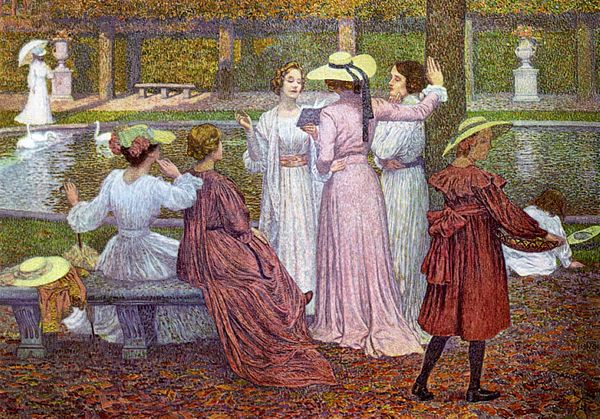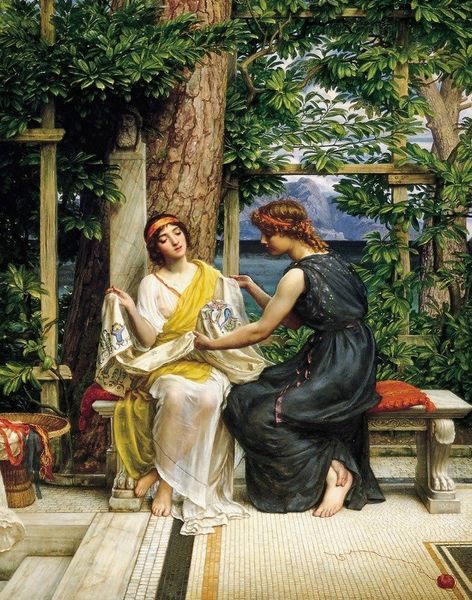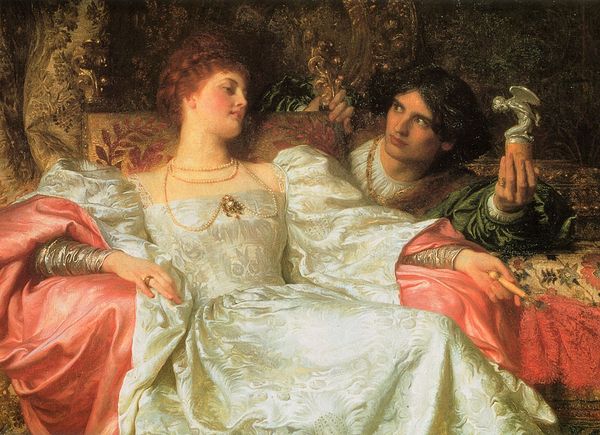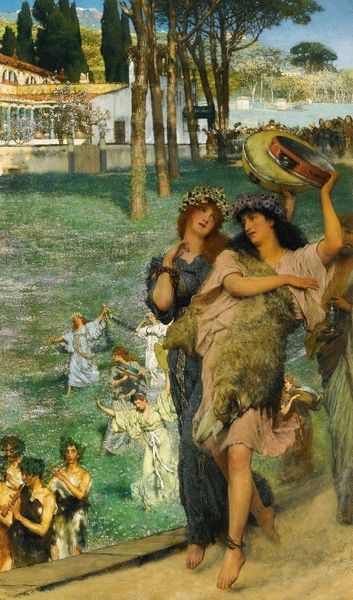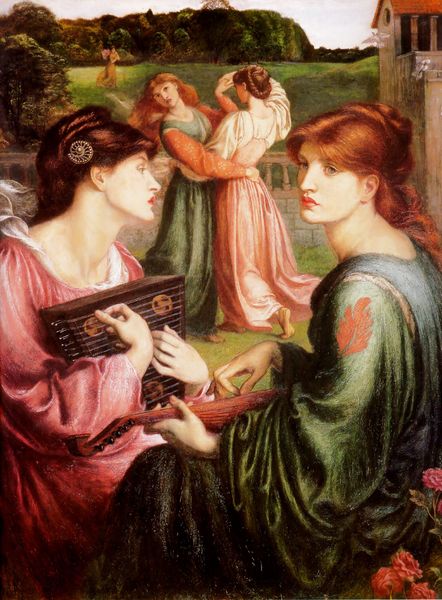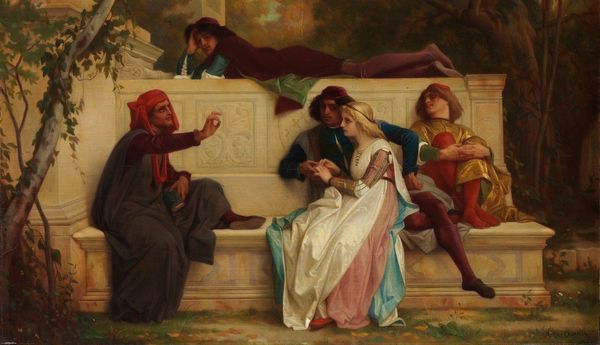
A Tale from the Decameron 1916
0:00
0:00
johnwilliamwaterhouse
Lady Lever Art Gallery, Port Sunlight, UK
Dimensions: 102 x 159 cm
Copyright: Public domain
Editor: This is John William Waterhouse's "A Tale from the Decameron," painted in 1916, using oil paint and gouache. It really gives me a feeling of being transported to another time... a sort of Renaissance daydream. What do you see in this piece? Curator: Beyond the surface of Romantic escapism, there’s a fascinating play with the construction of leisure and storytelling. Waterhouse situates his figures in a liminal space—a garden that's both contained and yet suggestive of a larger world beyond. Editor: Liminal? You mean like a threshold? Curator: Exactly! Consider how Waterhouse draws from Boccaccio’s *Decameron*. Boccaccio's stories provided an avenue for the exploration of moral and social issues under the guise of entertainment during a time of great social upheaval and anxiety during the Plague. Editor: So, it’s about more than just people having a nice picnic and telling stories? Curator: Precisely! And Waterhouse is playing with the idea of spectacle, the construction of audience, and the inherent social dynamics present whenever a narrative unfolds within a group. Think of how museums themselves operate—they frame stories for public consumption. It subtly calls into question whose voices get heard, which stories get told, and how these narratives shape our understanding of the past and present. What kind of “plague” could the Edwardians see reflected here? Editor: That’s interesting! I hadn't thought about it as a commentary on the storytelling itself, or how social forces play into the consumption of art and narrative. Thanks! Curator: It shows us how art constantly reflects and reshapes societal concerns; Waterhouse doesn't just illustrate a scene, he gives it resonance within his contemporary moment and for those to come.
Comments
No comments
Be the first to comment and join the conversation on the ultimate creative platform.

